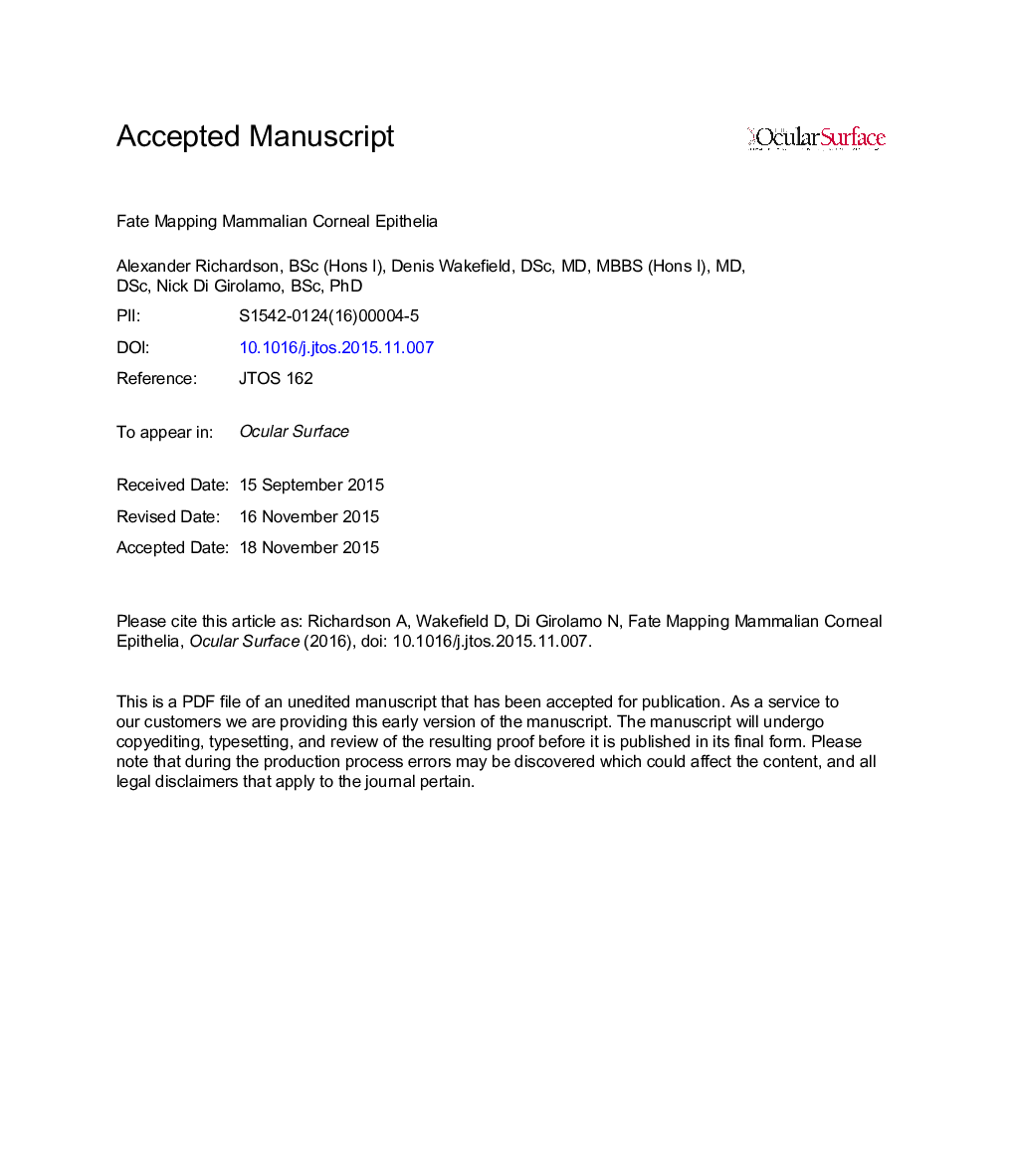| Article ID | Journal | Published Year | Pages | File Type |
|---|---|---|---|---|
| 10163588 | The Ocular Surface | 2016 | 51 Pages |
Abstract
The anterior aspect of the cornea consists of a stratified squamous epithelium, thought to be maintained by a rare population of stem cells (SCs) that reside in the limbal transition zone. Although migration of cells that replenish the corneal epithelium has been studied for over a century, the process is still poorly understood and not well characterized. Numerous techniques have been employed to examine corneal epithelial dynamics, including visualization by light microscopy, the incorporation of vital dyes and DNA labels, and transplantation of genetically marked cells that have acted as cell and lineage beacons. Modern-day lineage tracing utilizes molecular methods to determine the fate of a specific cell and its progeny over time. Classically employed in developmental biology, lineage tracing has been used more recently to track the progeny of adult SCs in a number of organs to pin-point their location and understand their movement and influence on tissue regeneration. This review highlights key discoveries that have led researchers to develop cutting-edge genetic tools to effectively and more accurately monitor turnover and displacement of cells within the mammalian corneal epithelium. Collating information on the basic biology of SCs will have clinical ramifications in furthering our knowledge of the processes that govern their role in homeostasis, wound-healing, transplantation, and how we can improve current unsatisfactory SC-based therapies for patients suffering blinding corneal disease.
Related Topics
Health Sciences
Medicine and Dentistry
Ophthalmology
Authors
Alexander BSc (Hons I), Denis DSc, MD, MBBS (Hons I), Nick BSc, PhD,
